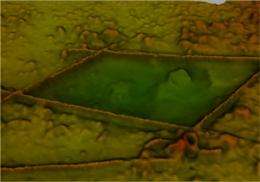The 3D mapping and digital reconstruction of an ancient underwater city have won a University team Canon Australia's Extreme Imaging competition
(PhysOrg.com) -- Photo-realistic 3D mapping and digital reconstruction of an ancient underwater city in Greece have earned a team from the University of Sydney's Faculty of Engineering and Information Technologies top honours in Canon Australia's Extreme Imaging competition.
Ariell Friedman, an engineering PhD student co-supervised by Professor Stefan Williams and Dr. Oscar Pizarro at the University's Australian Centre for Field Robotics, won the prize for his project titled 'Diver-based stereo 3D documentation of excavations in Pavlopetri'.
The marine robotics team worked on location at Pavlopetri, the oldest known submerged city, which lies off the coast of Greece's southern Laconia region.
Up to four meters of water covers artefacts and structures dating back 5000 years. Ariell's work not only involved operating the diver rig, but also modifying and improving the diver camera system and the development of software to allow the rapid production of maps by automating the data processing pipeline.
The Extreme Imaging competition is run by Canon Australia and CiSRA, Canon Inc.'s Australian research centre, and aims to promote and acknowledge local research at the intersection of imaging and technology.
"The competition recognises local advances in imaging science and recognises projects where students create equipment that can produce images beyond the boundaries of creative photography and video."
"The competition is open to students from any department - medicine, mechatronics, physics, engineering, computer science and the visual arts across Australia," said Stephen Hardy, Senior General Manager, CiSRA.
Two other University of Sydney PhD researchers were highly commended for their photographic endeavors.
Dr. Oliver Gibbs from Sydney Medical School, was recognised for his entry 'The Eye: a window to the heart?' that looks at the development of a device that may be able to take a picture of the retina (back of the eye) and assess the risk of having a heart attack or stroke.
Andre Kyme, from the School of Physics, was also highly commended for a project aimed at adapting brain-scanning techniques to allow them to be used while a subject is moving. This would enable scans to be taken while the subject was behaving normally or responding to stimuli.
Provided by University of Sydney





















